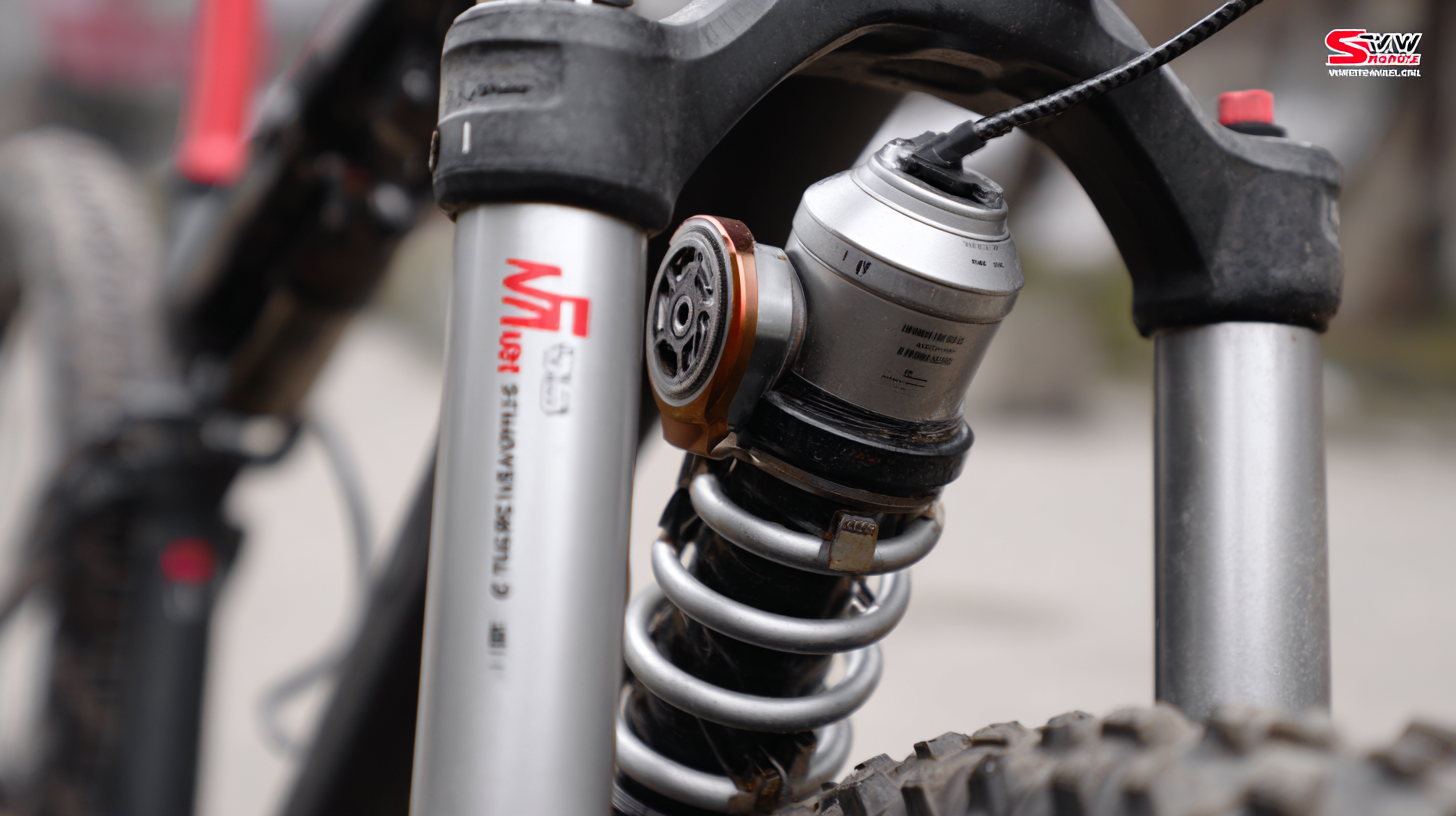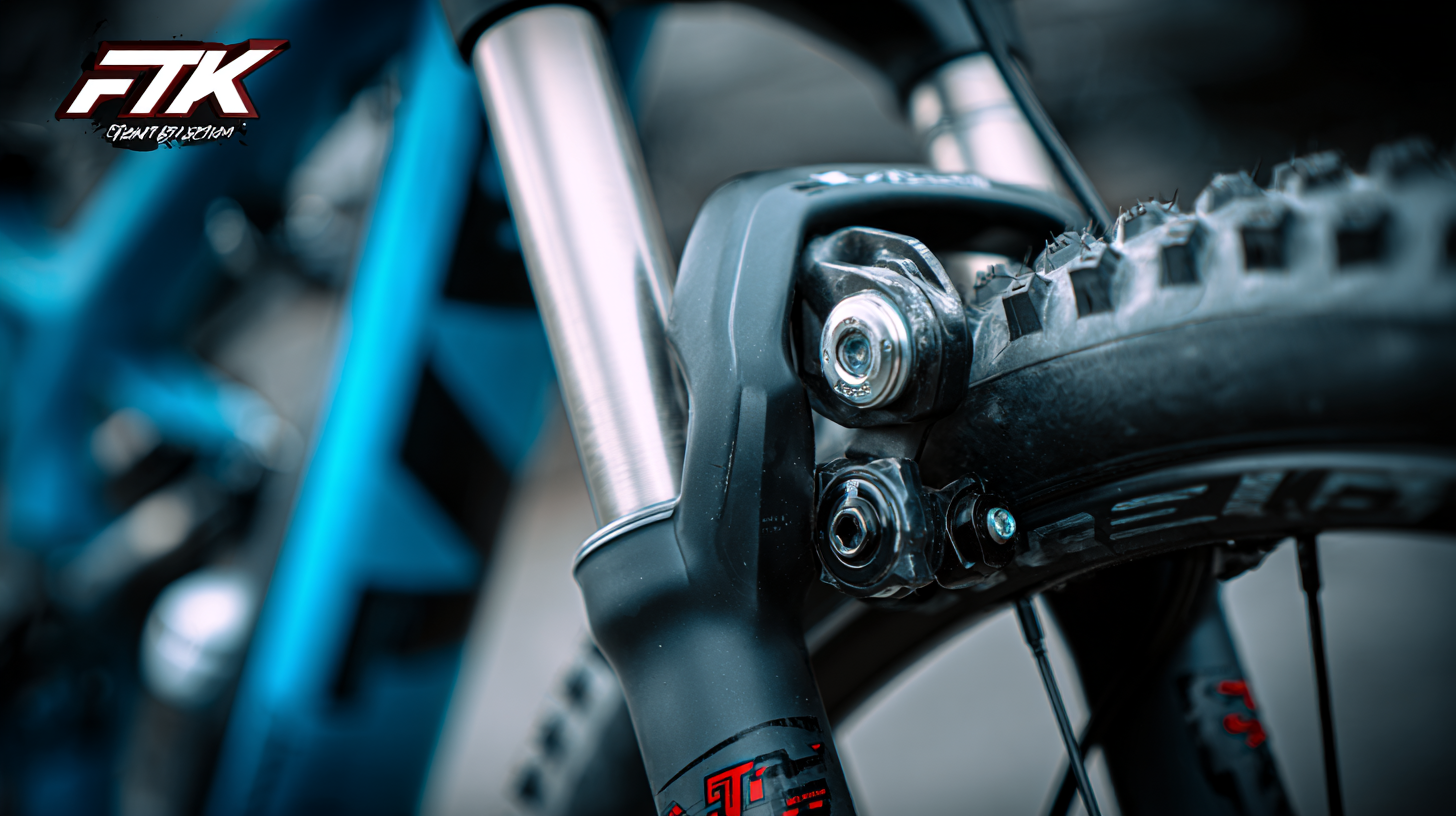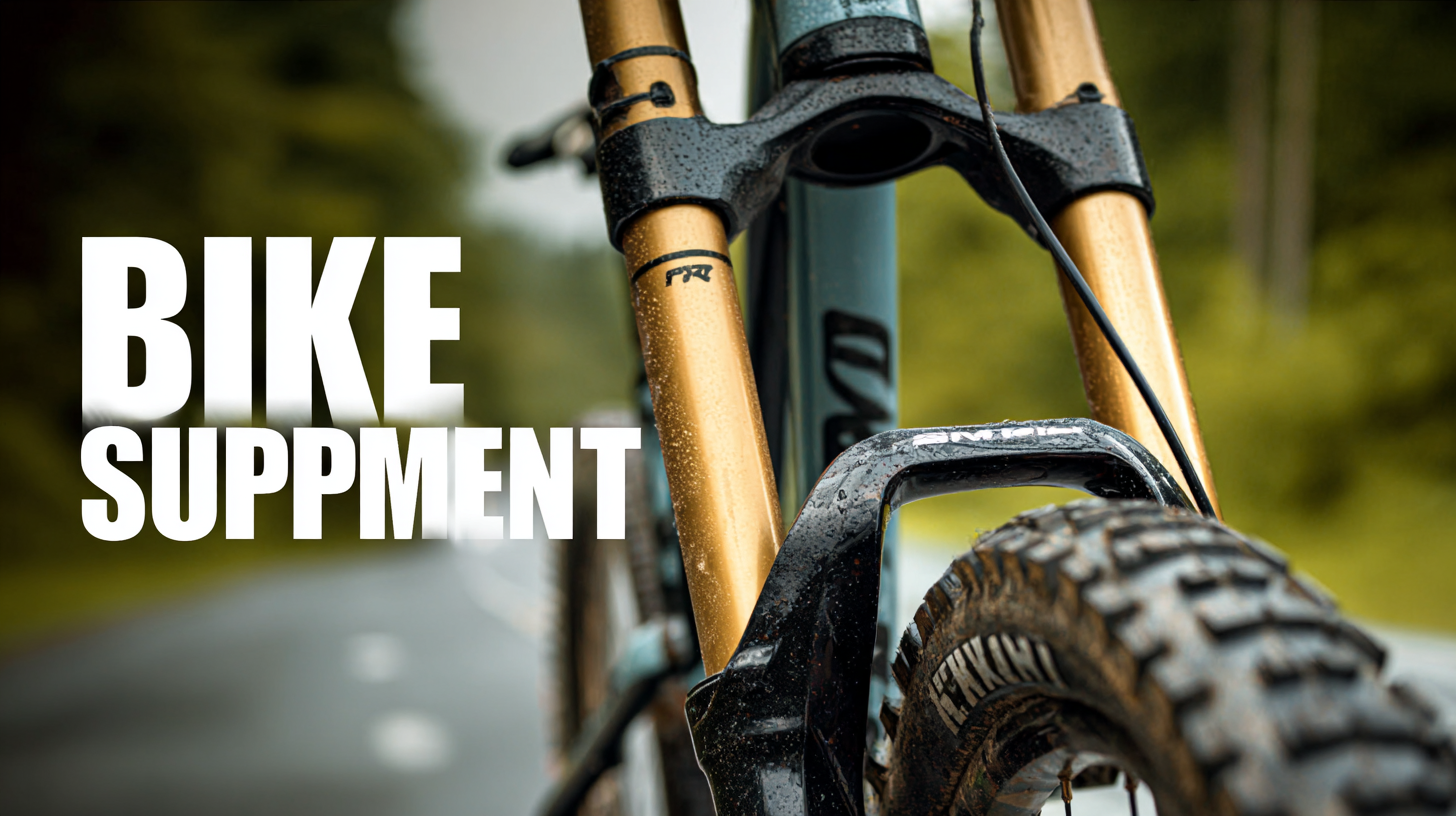As the cycling industry continues to evolve, the importance of selecting the right Bike Suspension Front has become paramount for both amateur and professional riders. According to a recent report by Allied Market Research, the global bicycle market is projected to reach $79.59 billion by 2025, with the demand for high-performance components, particularly suspension systems, driving significant advancements in design and technology. Riders are increasingly recognizing that a quality front suspension enhances not only comfort but also control and performance on various terrains. As innovations in materials and engineering emerge, understanding how to choose the best Bike Suspension Front is essential for maximizing ride quality and safety. In this blog, we will explore effective strategies that will help cyclists make informed decisions for their riding needs, ensuring they stay ahead in the ever-competitive cycling market.

When choosing the best bike suspension system, understanding the different types of bike suspension available is essential. The two primary types, hardtail and full-suspension, cater to different cycling styles and terrains. According to a study by the International Mountain Bicycling Association, around 50% of mountain bikers prefer full-suspension bikes for their enhanced comfort and control over rugged terrain. These systems feature both front and rear shocks, absorbing impact from bumps and drops, which is critical for downhill rides and trail adventures.
Tip: When selecting suspension, consider your primary riding style. For XC (cross-country) rides, a hardtail might be sufficient due to its lightweight nature and simplified mechanics, aiding in climbing efficiency. In contrast, full-suspension bikes excel in aggressive riding scenarios, offering better grip and maintaining speed through rough sections, as noted in a report from Bicycle Retailer and Industry News.
Additionally, within the suspension category, various spring types play crucial roles, notably air and coil springs. Research from Bike Magazine indicates that air springs are lighter and allow for easier adjustments, while coil springs provide more consistent performance and durability. This can influence your decision based on how frequently you ride and the types of trails you tackle.
Tip: Don’t overlook the importance of suspension tuning; adjusting the air pressure or preload based on your weight and ride conditions can significantly enhance your bike’s performance.
When it comes to selecting the best front suspension for your bike, several key factors play a crucial role in enhancing your riding experience. The type of terrain you plan to tackle should be your first consideration. For rugged trails with bumpy surfaces, a suspension fork with a larger travel (the distance the fork can compress) will help absorb impacts, ensuring a smoother ride. Conversely, if you mostly ride on smooth paths or roads, a firmer suspension with less travel provides better control and efficiency.
Another important aspect is your riding style and preferences. If you lean towards aggressive downhill riding, opting for a suspension that offers adjustable settings can be beneficial. This allows you to customize the stiffness and responsiveness of the fork based on your needs. Weight also matters; a lighter suspension design can enhance maneuverability, making it easier to navigate tight turns and steep descents. Assess these factors carefully to find the ideal front suspension that complements not only your bike but also your unique riding style.
| Factor | Description | Impact on Riding Style | Recommended Travel |
|---|---|---|---|
| Weight | The overall weight of the suspension system can affect the bike's handling and climbs. | Lighter systems are better for climbing and technical rides. | 100-120mm for XC, 140-160mm for trail. |
| Damping | The ability to control the suspension's response to bumps and terrain. | Better damping improves control and comfort on descents. | Depends on riding style; 130-150mm is common for all-mountain. |
| Adjustability | The ability to customize settings like preload, rebound, and compression. | Allows tuning for different terrains and personal preferences. | Varies; common ranges 120-160mm depending on flexibility needed. |
| Spring Type | Coil vs. air springs, each offering different feel and adjustment capabilities. | Coil offers more plushness, while air is lighter and adjustable. | Generally 120mm for both, specific types vary. |
| Travel | The distance the suspension can compress and extend. | More travel is suited for aggressive and rough terrain riding. | 100-160mm based on the type of riding. |
When selecting the best bike suspension front for your ride, it's essential to assess your riding environment, particularly the trail conditions. Different terrains demand varying suspension characteristics.
For instance, enduro racers who frequently tackle rocky trails benefit from a suspension that offers both durability and responsiveness, allowing them to navigate technical sections with agility. According to industry reports, a fork with around 150mm of travel is generally optimal for rough trails, providing the balance between handling and playfulness that riders crave.
In contrast, if your riding environment consists mainly of smoother, less technical trails, a shorter travel front suspension (about 120mm) can enhance efficiency and overall speed. Additionally, reports show that modern mountain bike design trends favor adjustable dampening settings, which enable riders to tailor their suspension performance to specific conditions. By understanding the demands of your local trails, you can make informed decisions on the most suitable suspension setup, ultimately improving your overall riding experience.
When selecting a front suspension for your bike, adjustability plays a critical role in ensuring the perfect balance between comfort and control. Research indicates that riders who prioritize adjustable suspensions can enhance their overall experience, with a study showing that 70% of mountain bikers report improved performance when fine-tuning their suspension settings to match varied terrains. This adaptability allows riders to optimize their setup for both uphill climbs and downhill descents, making it essential to seek out components that offer a wide range of adjustment options, such as preload, compression, and rebound settings.

Additionally, a recent industry report highlighted that adjustable front forks can significantly reduce rider fatigue during long rides. The report found that bikes equipped with high-quality adjustable suspension had a 30% higher satisfaction rate among users, attributing this to the ability to customize suspension responsiveness under different conditions. Riders can tailor their suspension to react aptly to rough trails, maintaining traction and absorbing shocks effectively. Therefore, investing in a front suspension that boasts comprehensive adjustability is vital for any cyclist looking to maximize both comfort and control on their rides.
When it comes to front suspension for bikes, the market offers a plethora of choices, each tailored to specific riding styles and terrains. According to a recent study by the International Mountain Bicycling Association (IMBA), over 60% of mountain bikers report that front suspension dramatically enhances their ride quality, particularly on rugged trails. Leading brands like RockShox and Fox Racing Shox have pioneered innovative technologies, including adjustable compression and rebound damping mechanisms, which allow riders to customize their experience based on trail conditions.

A closer look at top models reveals the RockShox SID with its lightweight design and exceptional stiffness, making it a favorite among competitive racers. In contrast, the Fox 34 Float offers superior versatility, catering to both cross-country and all-mountain riders. Data from the Bicycle Retailer & Industry News indicates that consumer preference leans significantly toward air-sprung forks, as they provide a better weight-to-performance ratio and customization options.
With brands continuously pushing the envelope in design and functionality, selecting the best front suspension is not just about performance; it’s about enhancing your overall cycling experience.
